Anyone who has tried making crystal slides to examine under polarized light has likely experimented with Ascorbic acid and, if not, this should be remedied immediately. Ascorbic acid (Vitamin C) is pleasant to work with and is quite safe, although it’s not a good idea to heat it to the point of decomposition as it will then produce an acrid smoke and irritating fumes.
One of the delights of Ascorbic acid (hereafter, ASC), is that it does often produce recognizable and predictable patterns, yet when combined with other reagents often displays quite unexpected results.
In this article, I am going to limit myself to crystals of ASC by itself, some of which, however, will be melts and a few mixtures with other substances. With a bit of ingenuity and caution in terms of your selection of mixing, you will find a rich set of possibilities that will continue to surprise and please you.
Let’s start with 4 examples of ASC where a drop of solution has been placed on the slide and allowed to dry by evaporation and then heated very moderately to melt the crystals. One of the most common forms of pattern that occur with ASC is the disk and, as you’ll see, there are disks in all 4 of these images.
This first image shows a large central disk nestled up to the edge of an even larger disk. The coloration is from using a green filter, a rotary quartz wedge, and polarization.

Clusters of disks can be quite pleasing as you can see in the image below.

In the third image, we have another pattern typical for ASC, namely, the Maltese cross. Here you can see it emanating from the center of the two disks.

Since so many factors are involved in the formation of crystals, such as, concentration of the solution, the solubility of the substance, the humidity during evaporation, the solvent, and, of course, temperature, predictability becomes extremely difficult. Using even modest temperature alternations form melts can produce a wonderfully surprising range of results and I’ll illustrate a few here. Sometimes, when the conditions come together just right, one can get a marvelous single disk; in this case, with a slightly elevated internal disk displaying a Maltese cross which then extends in a modified form out into the larger surrounding disk.

Sometimes, the Maltese cross formation is quite feathery in appearance.

On other occasions, entire disks can take on such a feathery character.

At a different place on the slide, there are disks that are surrounded by a plumose background.

And then there are the instances when an area of the slide produces a lovely green sunflower as shown below.

In yet other instances, one can get clusters of a very different sort that, as we shall see in a moment, can transmute into alien organisms. However, first the clusters and some even have “eyes”.


Now, we move into the alien realm; first with the bloated, bubble head of a strange creature from another world.

And then perhaps, it has a companion in the form of -a colorful, crested bird.

Another mixture that we tried, (Sawyer Winn helped in preparing the slides), was ASC and Manganese chloride. Sometimes, one gets a few images that feel exceptionally striking and yet somehow mysterious. The next 2 images impress me in that way.


However, such lovely displays can instantaneously turn whimsical just by moving a millimeter on the slide. The first example shows a disk on the right which again is quite striking, but it is attached to another disk which is a little alien sticking its tongue out at us.

Or, we can get a double disk which looks like the centers had been constructed by an inebriated mosaic layer.

Occasionally, one may catch a disk in the progress of metamorphosing. Here you can see it beginning to divide as evidenced by the “pinching” at the bottom.

Or, for inexplicable reasons, everything can just go berserk and you get a puzzling mishmash.
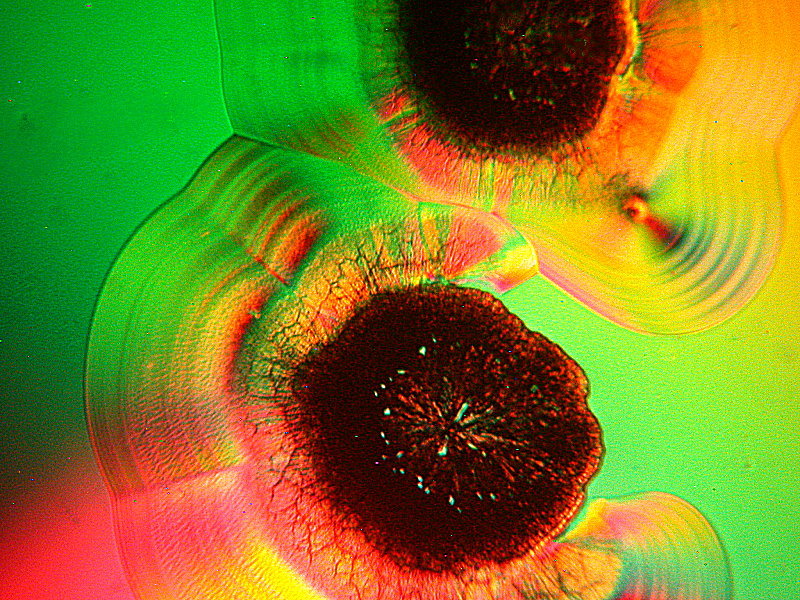
I want to conclude with a series of images which are a mixture of Benzoic acid and ASC and very well illustrate the enormous variation that one can discover on a single slide. Also, such images allow me to indulge in my fanciful pareidolia. The first one is a stunning insect which, as you might suspect, spears its prey as it whirls through the air.
Safety notice: If you decide to try Benzoic acid, do so with great care. It can be a health hazard and a serious skin and mucous membrane irritant. Furthermore, it should not be heated without taking ventilation precautions. Handle very carefully.

Next up is a rather ferocious looking bird with its baby.

Speaking of babies, here’s an alien baby.

This is followed by a clown after the fashion of Picasso.
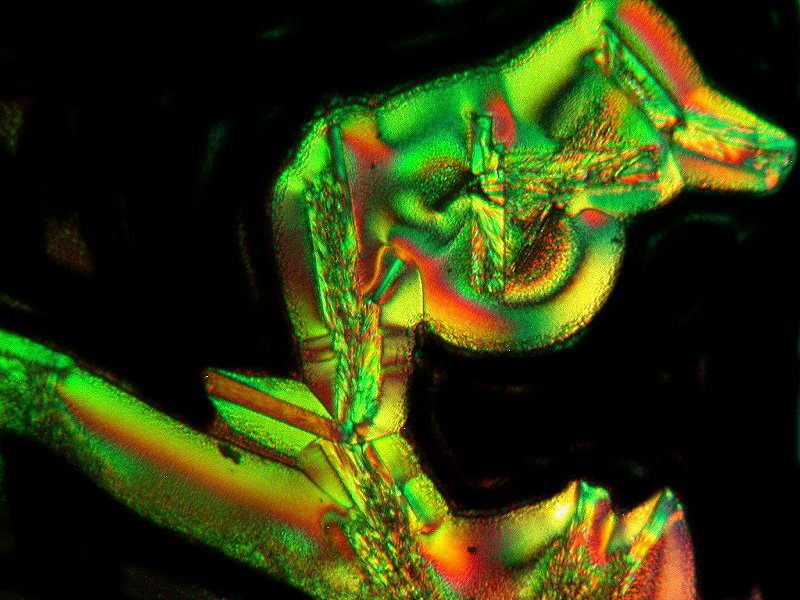
And now, a basking shark luxuriating, preparing for the evening hunt.

And now finally, a series of abstracts all taken from the same slide as the one above and displayed just to show the remarkable diversity that a single mixture can produce. I’ll just present them here without comment.


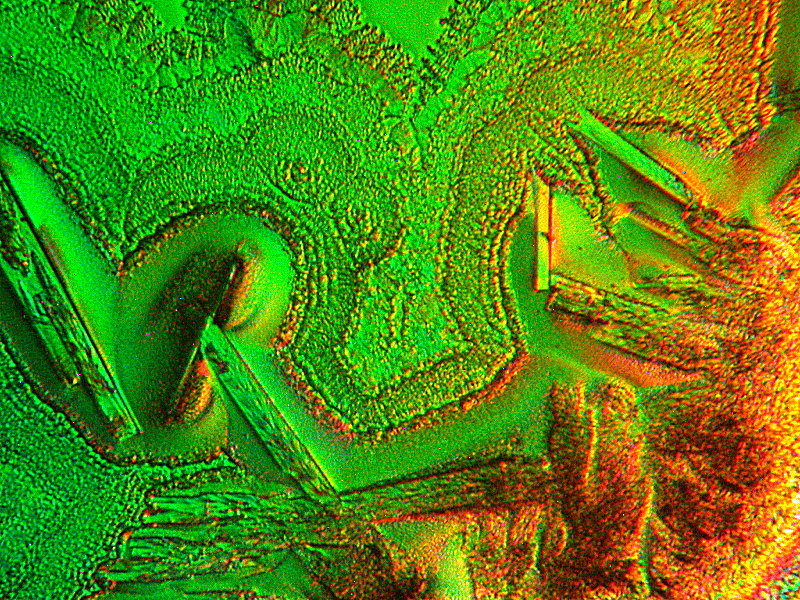
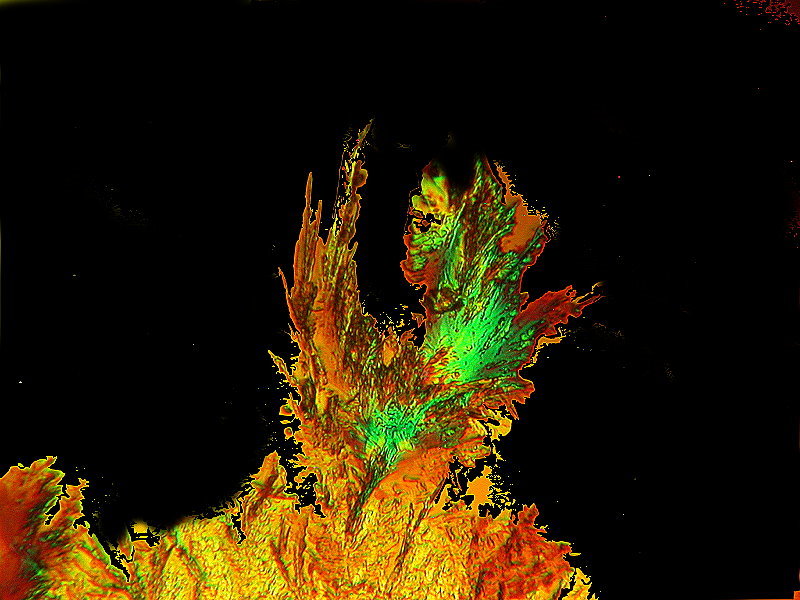
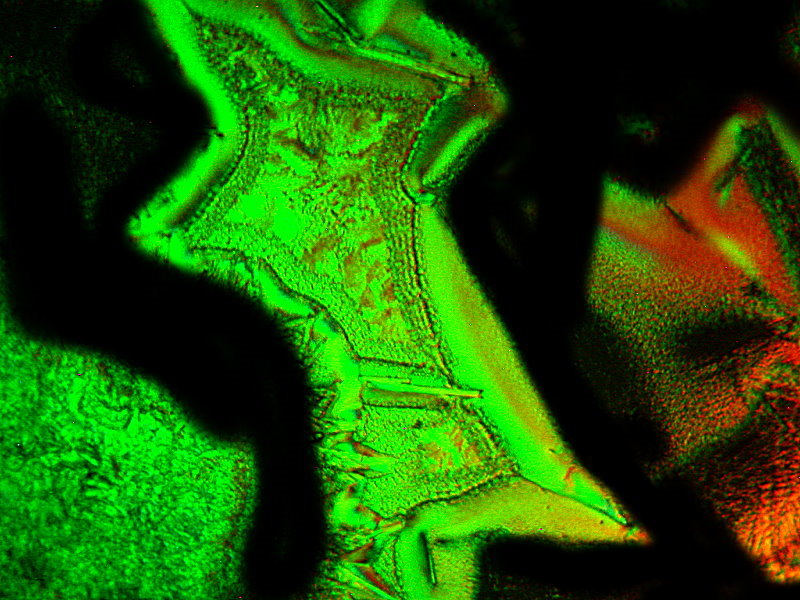
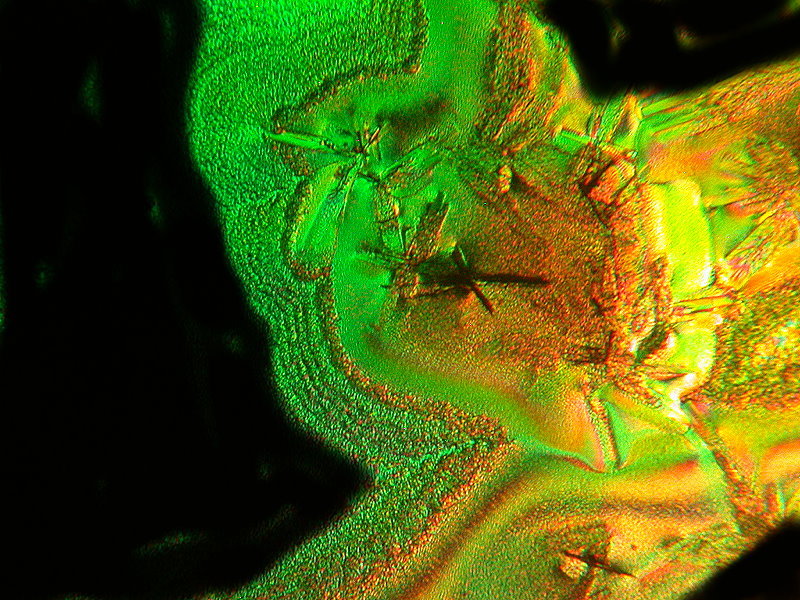
I hope you’ve had a bit of fun with this whimsy and may be inspired to do some experimentation of your own with the remarkably versatile Ascorbic acid.